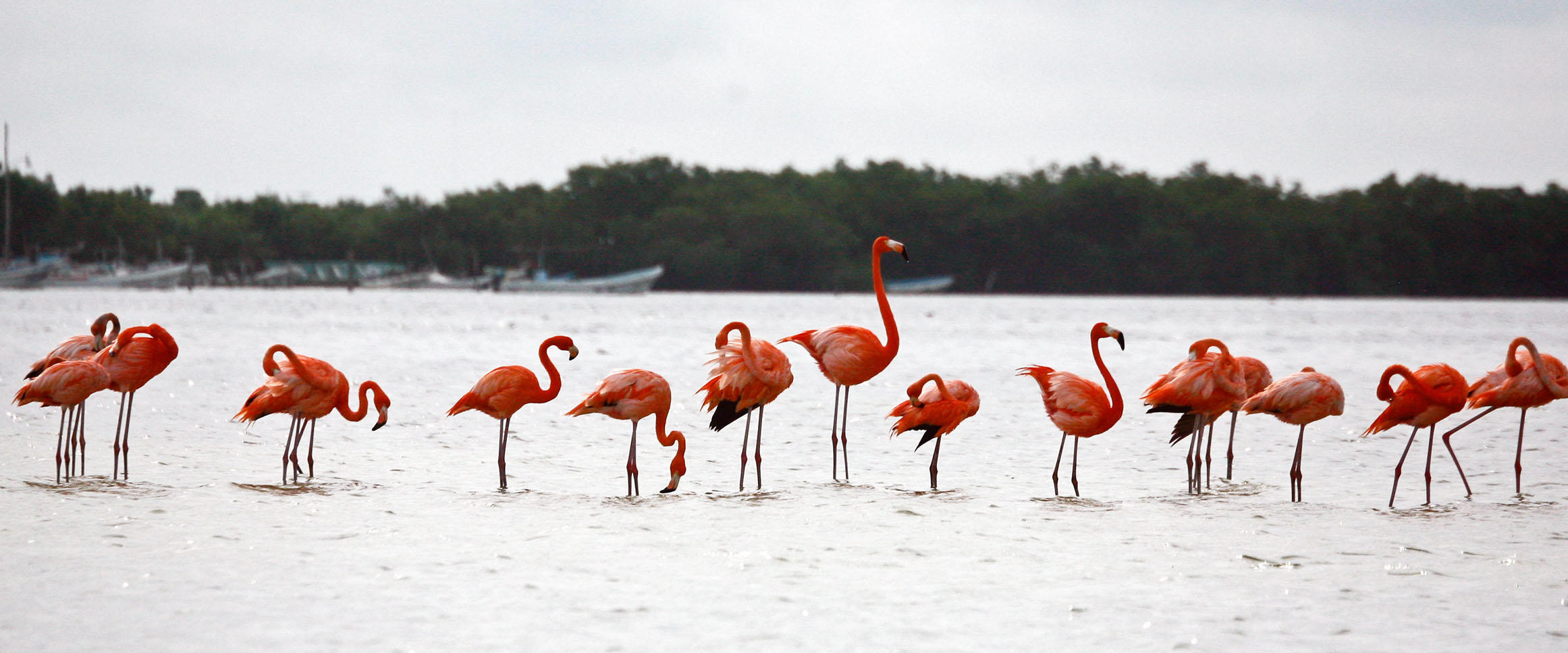By 1900, as a result of hunting, no nesting American Flamingos remained in Florida. Accordingly, American Flamingos (Phoenicopterus ruber) seen in Florida since that time were a conundrum. Should they be considered a native species returning to their historic range from breeding populations elsewhere? Or are they escapees from captive populations? A group of researchers that includes top scientists from Audubon Florida's Everglades Science Center put that question to rest in a paper this March. Modern searches and analysis by researchers strongly indicate that Flamingos seen today in Florida should be considered a naturally occurring, native species to Florida. Long heralded as an icon of the Sunshine State, many researchers once thought American Flamingos seen in recent decades were simply escaped captive birds. Researchers argue that they are pioneers recolonizing their historic range and should be considered part of Florida’s native fauna.
The research group analyzed historical evidence of American Flamingos in Florida from narrative accounts and museum records and contrasted that information to sightings of the pink bird. They concluded that American Flamingos once occurred naturally in large flocks in Florida before disappearing in the early 1900's. Collected data since 1950 add up to 500 observations of American Flamingos in Florida with an increase in frequency and flock size over time.
"The overwhelming record of evidence support our conclusions that Flamingos are part of our native fauna," said Dr. Jerry Lorenz, state director of research for Audubon Florida. "The good news is that many habitats we believe critical to the success of the species are already protected. Everglades National Park along with southern Florida's complex of National Wildlife Refuges are the primary areas that supported Flamingos in the past. Continuing restoration efforts in America's Everglades to get the water right for all of Florida's iconic wading birds will also translate into a bright future for the American Flamingo in Florida."
The special partnership between state and federal agencies to restore America's Everglades is the key to the future of the hundreds of wading birds that depend on this ecosystem. Now it is also the key to the recovery of Florida's long-lost icon, the American Flamingo. Lorenz, encouraged by the new findings said, "State and federal agencies have worked in tandem for years to protect vital coastal wetlands and restore America's Everglades. The findings of this study should help convince policymakers to advance restoration efforts to rehydrate Everglades National Park and Florida Bay and properly fund the management of our National Wildlife Refuges. Wouldn't it be a great economic boon to have Flamingos be a common sight in the Florida Keys and Everglades National Park like they were prior to 1900?!"
The study was conducted by: Stephen Whitman and Frank Ridgley from Zoo Miami, Dr. Jerry Lorenz and Pete Frezza from Audubon's Everglades Science Center, Anne Mauro from Rookery Bay National Estuarine Research Reserve, Judd Patterson from the National Park Service, and Antonio Pernas from Big Cypress National Preserve.





